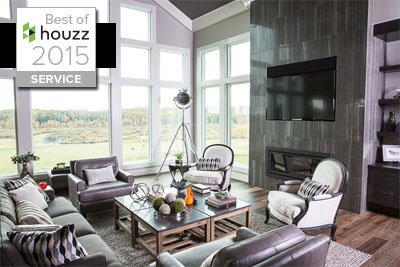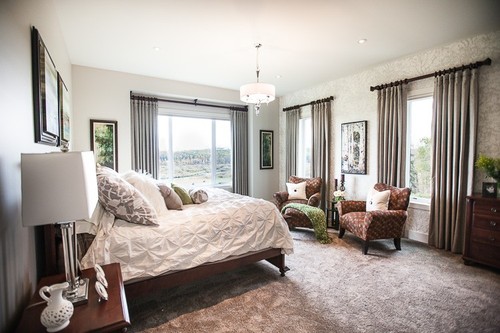As seen on CTV Noon News: Edmonton
Below is the source text from the CTV News interview with Ellen and Dr Ganz Ferrance.
Interview topic taken from original article here: Five Things to Know About Light in the Workplace
Have you ever walked into a home or business and felt calm, comfortable, energized and excited? Or maybe you felt disorganized, chaotic and heavy and you just really wanted to walk out the door you just came in? A well designed space affects the way you and your visitors feel, but also is an important factor in how much stress you have in your life.
Here are some things to know that will make sure your space works for you – not against you.
Why would a designer and a psychologist get together and talk about this?
Your Space Affects Your Stress
Dr. Ganz: I’m all about people feeling and doing their best. People don’t always know about this, but your space or environment can be a source of “sneaky stress”. You don’t always see it or are aware of it but it definitely has an effect on how you feel, your mood, health, your stress level and even on your relationships both at home and at work.
Ellen: I was working on a commercial project, and this client wanted me to visit another commercial space. When I toured this space, I felt it – The choices in the design and the layout got me interested in how psychology and design are related. I started to share some ideas with Ganz and really got excited about the whole “psychology of design”. That’s why we thought about getting together and talking about this subject – to help people understand how their space helps or hurts them and what to do about it.
Lighting is Important
Dr. Ganz: Everyone is affected by the amount of daylight they get both at home and at work. The amount, duration and intensity make a difference to your mood, health and your productivity. Some people have heard of Seasonal Affective Disorder (SAD). This is when you don’t get enough light and your brain can’t produce the right amount of the neurotransmitter serotonin. When this happens people usually feel low drive, they can be more irritable, they feel depressed, and they can lose interest in sex and have physical aches and pains. This is a big problem for us in the north during the winters or for people who either work shift work or in the inside of buildings with no natural light. Of course a good design can help prevent this.
Ellen: Brightly lit rooms feel more cheerful. They make you feel better and help you be more productive. For example, studies have shown that people who sit near windows get more work done and actually use their computer for the job they are being paid to do. Task lighting (like desk lamps or under cabinet lights in your kitchen) also help you to stay focused on what you are doing. Layering your lighting such as having a general overhead ambient lights like pot lights, along with pendant lights and under cabinet lighting help reduce shadows and eye strain – all work to reduce your stress, make your tasks easier and create a positive mood.
Features like clerestories (a band of windows at roof height), light tubes, skylights as well as large windows help you get the most out of your available natural light.
My son just moved from a basement suite with very small, north-facing windows and very little natural light. Whenever I went there, it felt dark, gloomy and heavy. I can see how it affected his mood. His new place has large windows that face both east and west and his bedroom window faces across a field to the east. Walking into his new place feels brighter and cheerier and I see a brighter mood in him as well.
Dr. Ganz: So it’s not only about having a lot of light, but actually having the right light at the right time to help manage your stress in your space. This means using shades and blinds to make sure you can see your work when you need to work, but also block out the light at night. Things like street lamps, but also your clocks, TV’s or cellphones have a huge effect on the quality of sleep you get and so can increase your stress by disturbing your rest. (This is especially true with light in the blue part of the spectrum, TV’s, cellphones, iPad, and even some street lamp and headlights can stop your brain from producing melatonin which is the hormone which helps you get good quality restful sleep). I suggest cutting out all sources of this type of light at least an hour before bedtime.
Colour Counts
Ellen: Colour can also affect the way you feel, your energy and even your physiology – from feeling energized and calm to irritated and depressed. We all respond differently to colours and have positive or negative associations with certain colours. However, there are some general principles you should be aware of. Cool colours (blues, greens) can be used when you want to feel calm. Warm colours (oranges, yellows, reds) can be used when you want more energy. When one colour is used with 2 other colours that are close to its complimentary colour your space feels balanced and comfortable. For example, combining a soft buttery yellow with tranquil green, and a soft blue feels calming to most people.
Putting reds, yellows and oranges together is stimulating and is sometimes used in restaurants to increase your energy and hopefully your appetite (restaurants also use red to increase the turnover of patrons because the redder colours increases energy and helps people move through the dining experience more quickly).
Dr. Ganz: Colour can seem like such a small thing, but the subtle unconscious effect on your mood, state, mental functioning and well-being can really add up. Remember every little bit of stress that you add or take away has an effect on your overall toxic stress load. Kids are really tuned into this. When I was setting up my first office here in Edmonton, I painted the office with the trend colours of the day – greys. After everything was painted, I brought my five year old daughter to see my new office. As soon as she walked in she didn’t even get past the reception desk before she started to cry (actually – bawl) and try to pull me back out of the office. Needless to say, I repainted. When she walked in the second time she felt happy and comfortable and now so do all my clients. What my daughter was expressing we all feel but are not always aware of. You can only imagine how I would have felt going home at the end of the day, and what the affects would be on my family (and my clients) after spending eight hours a day in an environment that was so subtly threatening.
Ellen: This is why you need to be careful of when and how using neutral colours such as black, brown, gray, cream, because if they aren’t used in the right way they can actually have the opposite effect of what you are trying to achieve.
Mismanaged Makeovers
Let the Pros Handle It
Dr. Ganz: Remember I talked about the toxic stress load. Renovations and building projects can really cause a lot of stress even at the best of times, but especially if they are not handled well. I’ve lived through renovations myself and I know the stress it put on me and my family when I was trying to do it myself. I won’t be doing that again. I’ve also seen families strained to the max and couples have long, drawn-out fights over the colour of their backsplash. I’m a big believer in letting the pros handle what they are good at so that you can do what you are good at and get on with your life.
Ellen: If you get the wrong people to manage your renovation or build process – or trying to do it yourself – this can mean that your project takes longer, is more stressful, ends up costing you more, and doesn’t seem to come out right in the end. One of the mistakes I’ve seen homeowners and companies make is not having a congruent theme when they are renovating or building (for companies, not having consistency across their different locations has the same effect). When you visit, work, or live in a space like this, it can feel disjointed, disorganized and chaotic. And the more chaos, the more stress.
Dr. Ganz: Your space really does help you to feel stressed or calm and comfortable depending on how it’s put together. By paying attention to these “sneaky stresses” in your environment – and having your design elements work with you instead of against you – you can be happier, more productive and have better relationships at work and at home.
Ellen Walker is Canada’s premiere award-winning, as seen on CTV, Red Deer based interior designer who specializes in helping successful professionals throughout Central Alberta, Calgary and Edmonton enhance their homes to meet their changing lifestyles and needs. In addition to her residential service, she is a commercial designer, including law and medical offices.
Dr. Ganz Ferrance holds a Ph.D in Psychology and has been helping individuals and organizations reduce their stress and enjoy more success for over 20 years. He is a favorite of the media and has been interviewed several times by The Edmonton Journal, CBC Radio, Good Morning Canada, and CTV News. He has been a regular health panel expert on Alberta Primetime for over 2 years and has been presenting a monthly segment on CTV’s Noon News for the past 7 years. You can learn more about “Dr. Ganz” and view some of tips from his TV appearances at DrGanzFerrance.com or give him a call at 780-428-5433.









